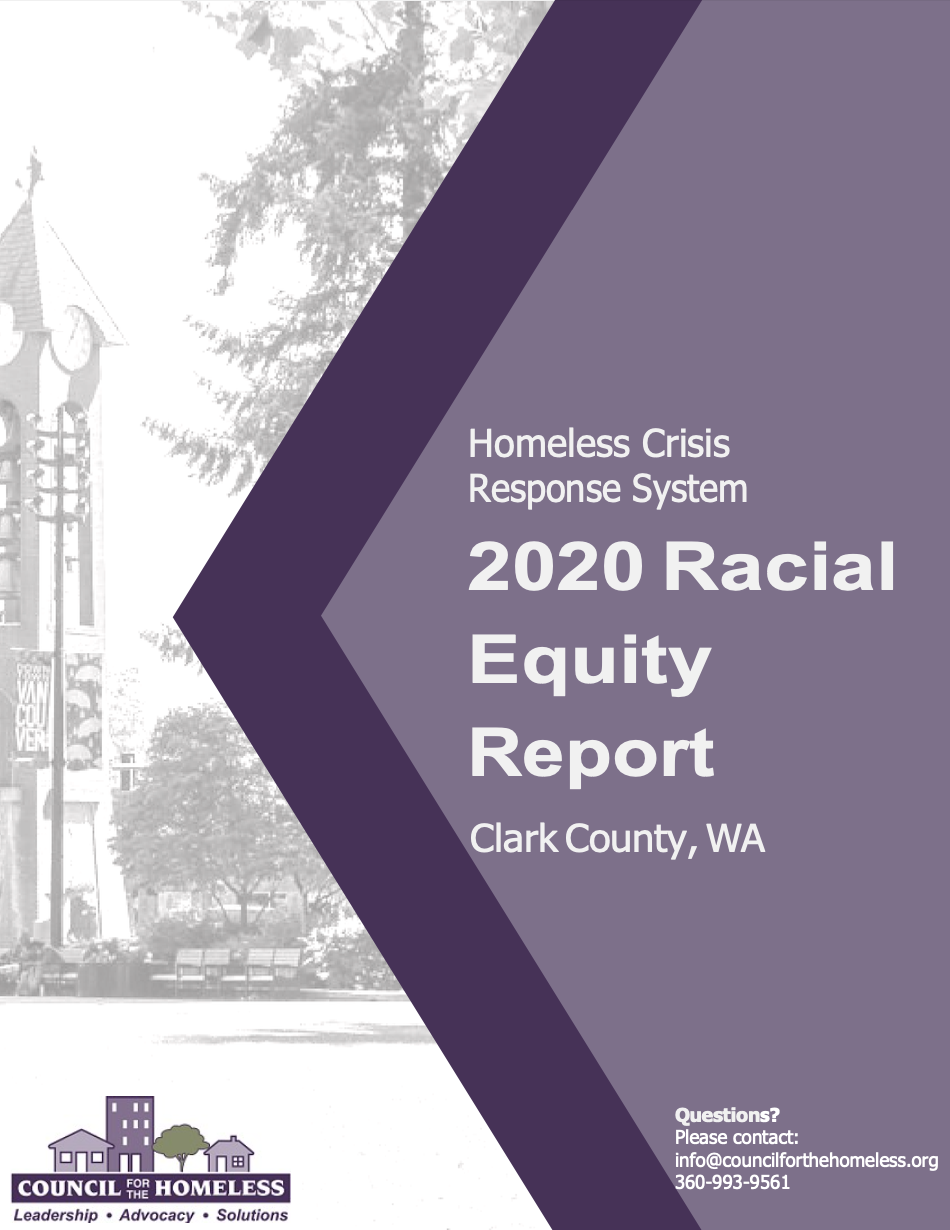By Charlene Welch, Council for the Homeless
 Council for the Homeless (CFTH) has released the 2020 Racial Equity Report for the Clark County Homeless Crisis Response System.
Council for the Homeless (CFTH) has released the 2020 Racial Equity Report for the Clark County Homeless Crisis Response System.
“It is our responsibility as service providers to understand and remedy racial disparities that occur when people access emergency shelter and housing assistance in our community,” shares CFTH Executive Director, Kate Budd. “We do this by breaking down program data by race and ethnicity and analyzing the outcomes of each program,” she says.
The study of racial inequities related to homelessness is a priority for many agencies and organizations across the United States. According to the National Alliance to End Homelessness, “The most striking disparity can be found among African Americans, who represent 13% of the general (U.S.) population but account for 39% of people experiencing homelessness and more than 50% of homeless families with children.”* The causes of this are rooted in “systemic inequity and the lingering effects of racism continue to perpetuate disparities in critical areas that impact rates of homelessness.” the Alliance reported. These include poverty, segregation and housing discrimination, healthcare, and incarceration. These same elements hold true for other minority groups including indigenous and Latinx.
The 2020 Racial Equity Report bears this out for our local community. In 2020, 23% of the Clark County population identified as a person of color, while 37% of people experiencing homelessness identified as a person of color. Through partnerships with local culturally-specific groups and agencies, and gaining feedback from clients who identify as Black, Indigenous, People of Color (BIPOC), the Homeless Crisis Response System is working to reduce barriers to access and positive outcomes. The report includes recommendations for improvement based on data analyzed, and notes that, according to the numbers, progress has been made in addressing biases in the system.
An example of progress in reducing racial disparities in the Homeless Crisis Response System:
- The adoption of the Clark County Assessment Tool (C-CAT). The C-CAT is a localized vulnerability assessment tool developed collaboratively with housing partners, people experiencing homlessness, and culturally specific partners. The C-CAT resulted in a reduction of the gap between people who are white and populations of color entering into housing programs.
An example of an opportunity to further reduce racial disparities in the Homeless Crisis Response System:
- The racial differences in rates of childhood homelessness is high. Forty-five percent of Pacific Islanders experiencing homelessness were children compared to just 21% of white people. There is an opportunity to improve housing program access for families, especially families with multiple children, to help lower the number of children in our community experiencing homelessness.
Above all, the goal of the report is to help our community work towards the reality that one’s race does not impact one’s access to homelessness assistance or success within an assistance program.
*Source: National Alliance to End Homelessness: Annual Homeless Assessment Report to Congress, 2021. Homelessness and Racial Disparities.
